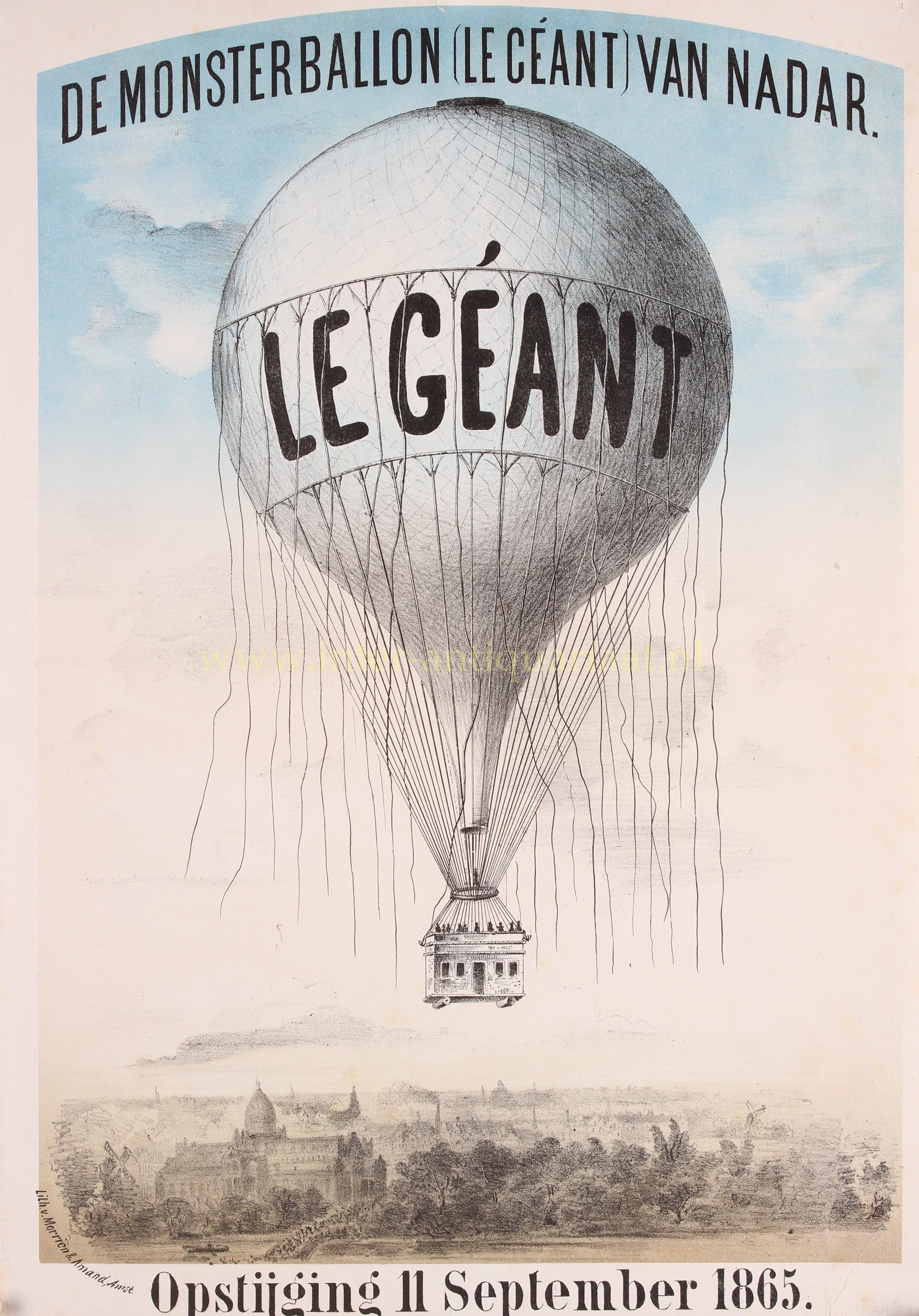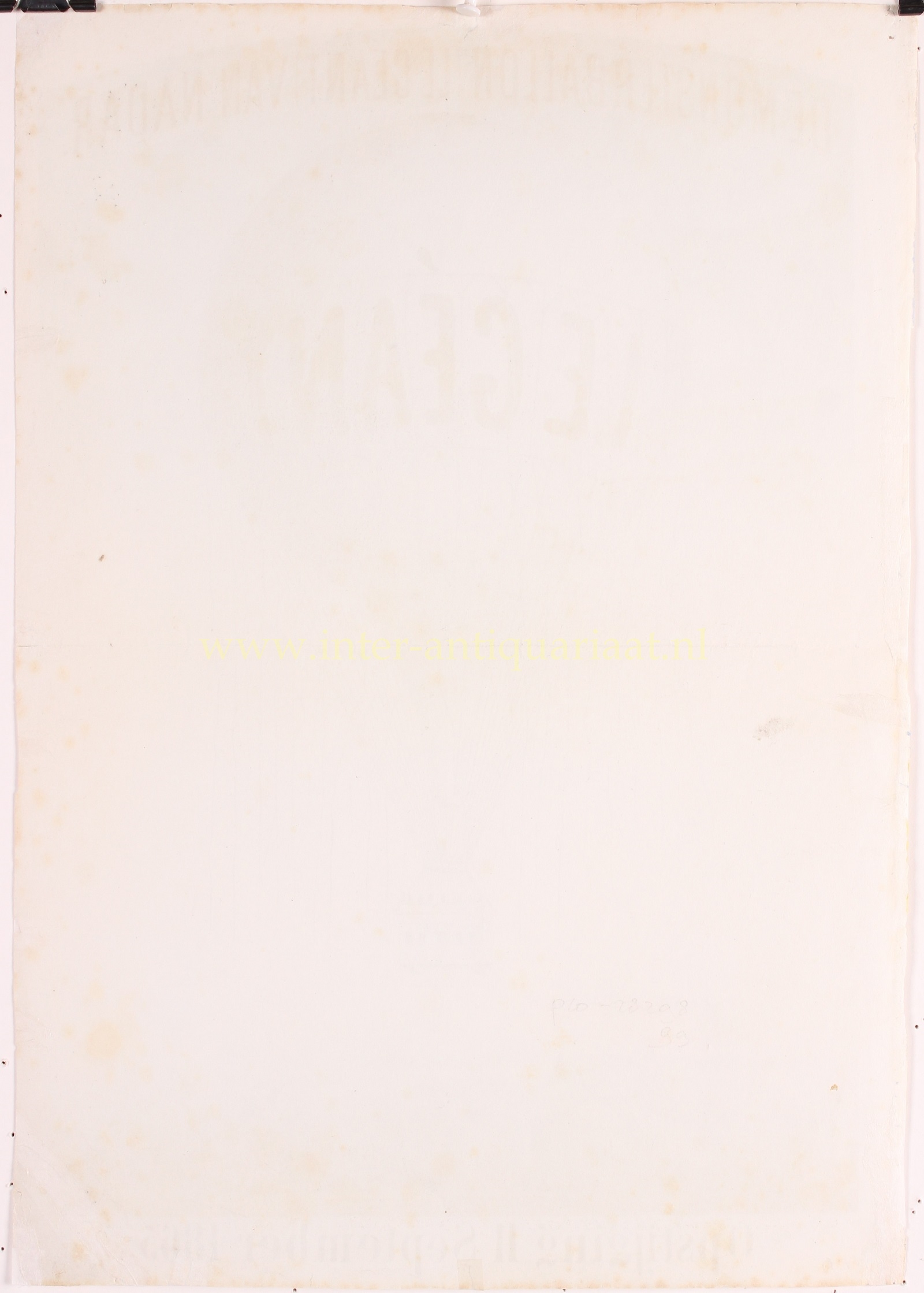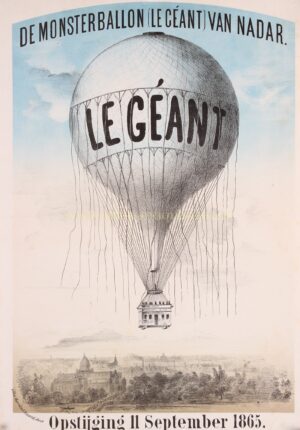Ballooning – Morrien & Amand, 1865
“De Monsterballon (Le Géant) van Nadar. Opstijging 11 September 1865.” Lithograph printed by Morrien & Amand. Size (paper) 39,2 x 26,9 cm.
On Monday, September 11, 1865, the people of Amsterdam were treated to a unique spectacle on the fields just outside one of the city gates: Mr. Nadar’s giant balloon, named “Le Géant.” The balloon was filled with ‘6,098 cubic ellen of gas’ and could carry 4500 kilos into the air. The gondola was a ‘little boat arranged like a house with two floors.’
Curious onlookers from near and far came to the city to witness the French adventurer’s air journey with their own eyes. Dutch Railways put extra trains into service, and extra steamboats plied the waters between Purmerend and Amsterdam. However, when it became clear that on that Monday, September 11, 1865, the wind was unacceptably strong, the event was canceled and postponed.
Félix Nadar (pseudonym for Félix Tournachon), photographer, journalist, and balloonist, went to great lengths to apologize and called on his audience to join him on Thursday, September 14. On that day, the field outside the Paleis voor Volkvlijt, filled up again with spectators. The balloon slowly inflated with gas and gradually rose upright. When the 400 citizens and soldiers who were holding the balloon released it, ‘Le Géant’ finally ascended.
For an hour, Nadar and his company traveled through the air, but when the North Sea came alarmingly close, Nadar decided to land his monstrous balloon in the Haarlemmermeerpolder. Fortunately, the adventurers were able to crawl out of their “house” unharmed.
Nadar was the first person in history to take aerial photographs. “Le Géant” inspired Jules Verne to write his adventure novel “Cinq semaines en ballon” (Five Weeks in a Balloon), published in 1863.
Literature: Frederik Muller “Nederlandse Historieplaten”, nr. 7393-A
Price: SOLD





